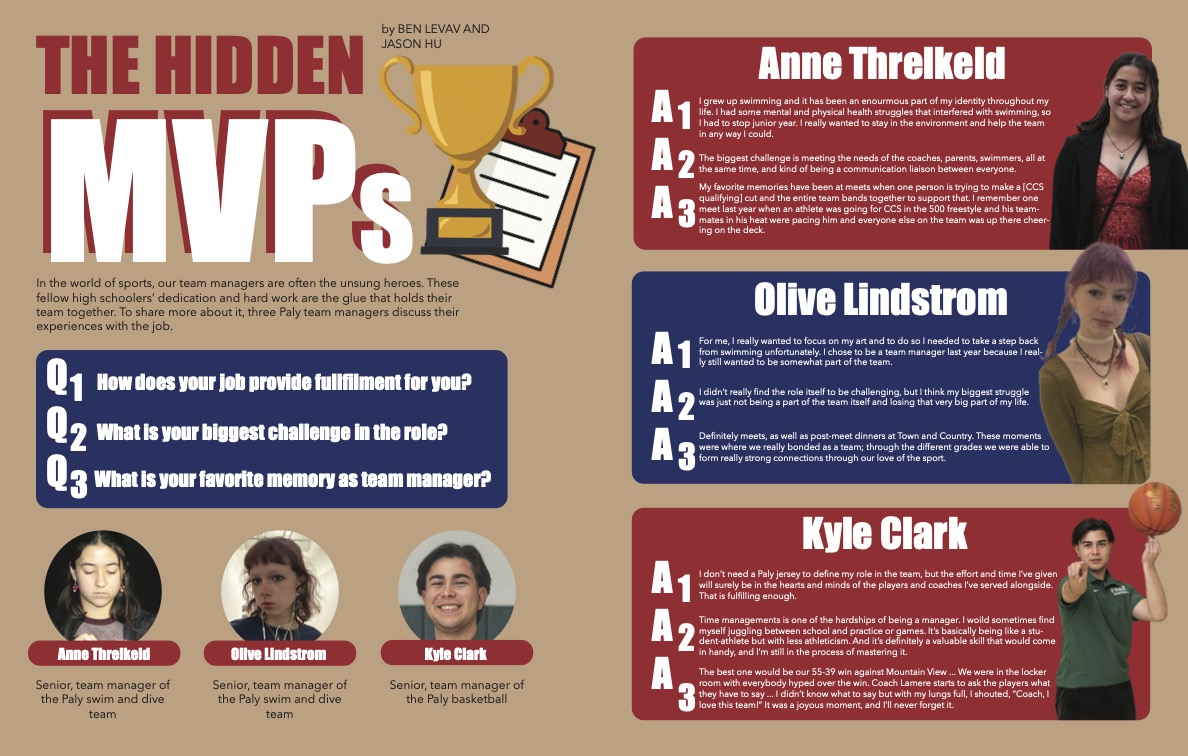Viking Tries: The Driving Range
Five members of Viking Magazine take on one of the most challenging sports the world has to offer.
December 19, 2022
In most sports, the higher the score, the better. This holds true for almost every professional sport played here in the States; in basketball, football, baseball, and soccer, the team who wins is the team that scores the highest amount of points. But, have you ever heard of a sport where scoring lower is better?
Golf is one of the only sports where this phenomena is true. Despite being unique in this sense, Golf has been around for hundreds of years. People began playing the game in the fifteenth century, starting in Scotland. In the five hundred years since then, the game has evolved and modernized.
This issue, the Viking staff partook in this historic sport and put their skills to the test in a fun competition.
The competition breaks down as follows: driving, target, and putting. Our participants included seniors Jackson Martin, Cameron Toland, Ivan Ijzerman, and juniors Trey Collins and Tyler Wong. Different people had different thoughts on who would win.
“I usually go to the range about at least once a week with my friends just to play for fun,” Martin said. “I thought going into the competition being able to show off some of the skills I learned would be pretty fun. I was pretty confident in my ability to perform well.”
Toland thought otherwise. She believed herself the most qualified to win because of her previous experience with the sport.
“I had instruction in golf before and compared to all of my competition, I am probably the only one with real experience and instruction,” Toland said. “But I’m the only girl participating in this so the boys are definitely going to be able to beat me in strength. I won’t outdrive anyone but I think I’m a better golfer than all of them.”
Beginning with the driving segment, participants would grab the club with the biggest head –– known in golf as “the driver” –– and try to hit the ball as far as possible. The horizontal distance of the ball would be the measurement of who wins. This is known as the “carry distance” in golf. Participants had three tries to hit the ball as far as they could, then points were distributed accordingly.
But I’m the only girl participating in this so the boys are definitely going to be able to beat me in strength. I won’t outdrive anyone but I think I’m a better golfer than all of them.
— Cameron Toland
Toland’s prediction of the boys “outdriving her” came true. Wong won this segment with a 210 yard carry, outdriving everybody by at least 30 yards. In professional golfing, the average drive carry from the past PGA tour season is 284 yards and the world record for the longest drive in the pros is 476 yards. The discrepancy between the best Viking carry and said numbers is wide, speaking to the strength and skill needed to compete at the highest level in golf. Despite Martin’s less than stellar performance –– he only hit it 180 yards –– he still liked the event.
“This was an enjoyable event for me,” Martin said. “I loved to see the ball soar off the tee.”
The second portion of the competition was the “target segment.” Participants had three tries to hit the ball on a target located in the middle of the driving range, 40 yards away. In colloquial, non-golf speak, the driving range is a huge land of grass surrounded by tall nets where golfers can practice their golf shots. Usually at the range, you hit off a fake grass “golf mat” that is similar to grass. The mat is more convenient and more environmentally friendly than real grass; real grass can shred and needs constant watering as well as maintenance.
Viking members could use any club of their choice to try and hit the target, but were advised to choose wisely: different club angles allow a golfer to control the distance and spin of the ball. Collins and Ijzerman chose to use the sand wedge, while Toland chose a pitching wedge. Wong and Martin went a completely different direction and chose a higher angled club, lob wedge.
There are four different types of wedges: the pitching, gap, sand, and lob. Wedges are used for long drives. The smaller the angle of the club, the farther the ball travels, but the larger the angle of the club, the more spin the ball has. Generally, a pitching wedge is angled between 43-47 from the vertical, making it the lowest degree wedge. The gap wedge follows, typically angled between 48-52 degrees from the vertical then the sand wedge, angled between 54-56 degrees from the vertical. The highest angled club wedge is the lob wedge, angled between 58-62 degrees from the vertical.
Participants would be awarded five points for hitting the target on their first try, four points for their second, three for their third, and zero if they never hit it.
Despite the seeming ease of this challenge, almost nobody was able to do it. Only Toland –– who nailed it on her last try –– was able to hit the target.
“I thought it was going to be easy, because the target was so close and seemed fairly big,” Wong said. “This wasn’t the case, and my confidence waned as I missed the target each of the three times.”
For the final segment of the competition, participants headed to the putting green. Here they would hit the ball from three different spots, with the goal of getting in into the hole. For putting, wedges are not used because they rough up the grass and cause divots and mud chunks. Instead, tradition demands putting with, well, a “putter.” That is, unless you are Happy Gilmore and prefer the hockey stick.
Putting was by far the hardest part in the competition,” Collins said. “It wasn’t easy compared to the other parts as I couldn’t use my strength, which had helped me previously.
— Trey Collins
The scores from this part were based on how many putts it took to get the ball in the hole. The smaller the number, the more points given. After the first hole, scores were close: Wong and Toland were tied. However, after putting from other spots, Toland pulled ahead, winning with an overall score of 7 putts for all three spots.
“Putting was by far the hardest part in the competition,” Collins said. “It wasn’t easy compared to the other parts as I couldn’t use my strength, which had helped me previously.”
After the three segments of the competition were over, overall scores were calculated. It was very close but Toland ultimately took home the crown of Viking’s best golfer, winning with a final score of 11 points: 3 points from the drive, 3 points from the target, and 5 points from the putting.
“It feels great to be able to win,“ she said. “This was the only Viking Tries that I had a chance of winning and I proved myself right.”
After playing golf for an afternoon, the Viking staff agrees that the sport is much more fun than they had previously thought, and highly encourages those who haven’t, to try it out for themselves.
“Golf is a really fun sport that I hope many people do discover if they haven’t yet,“ Wong said. “There is no limit to when you stop playing this sport as you can always keep going.”
5 Things you can Do to get into the Sport of Golf
Head to the driving range
You can head to the driving range and ask the golf store at the course –– the “pro shop,” –– to rent clubs, then hit balls from the range to see how you enjoy it. If you do enjoy it, I would recommend getting a starter golf set after so you don’t have to rent from the pro shop anymore.
Play a round of golf
You could also just try the sport out as a whole, beginning with booking a tee time either online or by calling the course, asking for a time and going from there. This allows you to see all of the aspects of the game, from driving to putting. You will need golf supplies however, including a golf bag with all of the clubs, balls, and tees which isn’t appealing to some. A course I would recommend to begin with is the Par-3 course at Mariners Point Golf Center located in Foster City.
Take a Lesson
A golf lesson is a great way to start as well, as this way you can learn the basics before you begin trying to play for sure. I would recommend taking a lesson at a course, as most of the instructors at a golf course are licensed by the PGA of America, the Pro Golf Association.
Sign up for Youth on Course
Another great option, especially for Paly students or other 18-and-under aspiring golfers, is the youth membership “Youth On Course,” which partners with golf courses around the country to provide kids with the opportunity to play golf. It’s a year-long membership that costs $25 and allows members to play most courses for $5 and under as long as you are under 19. A typical course costs between $80 and $150 dollars to play, so having Youth On Course is a money-saving way to play.
Watch pro golfers play either live or on TV
Watching golf may not seem to be the most interesting thing to do as there isn’t much action going on, but it is a good way to start to learn some strategy and terminology. You could also take some ideas from the professionals, watching their swing and try to incorporate it into your own as they are the best of the best.







